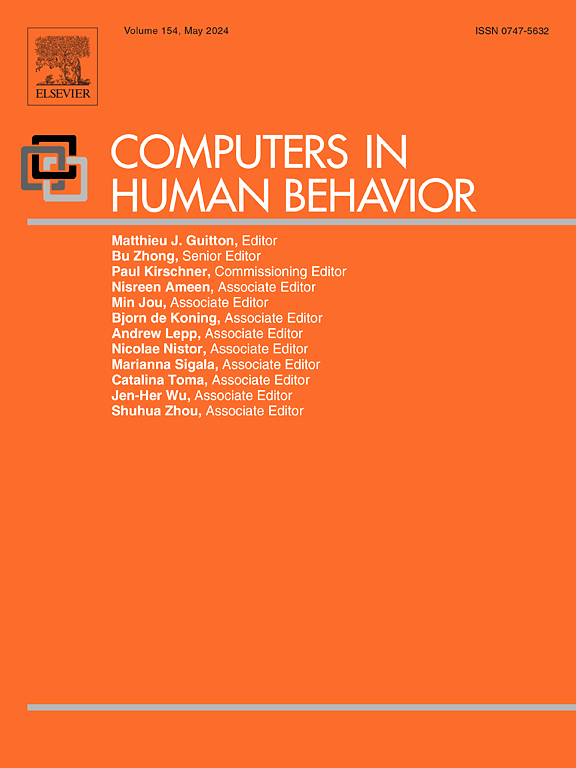基于网络分析的青少年网络成瘾、失眠、体育锻炼和自杀意念之间的相关性研究
IF 9
1区 心理学
Q1 PSYCHOLOGY, EXPERIMENTAL
引用次数: 0
摘要
目的网瘾(IA)、失眠和自杀是严重的公共卫生问题,影响深远,值得进一步关注。然而,很少有研究利用网络分析法从症状维度探讨它们之间的相互作用以及与身体活动(PA)的关系。本研究旨在构建IA-PA-失眠网络,并探讨与自杀意念相关性最强的症状。收集数据时使用了网络成瘾(修订版中国网络成瘾量表)、失眠(雅典失眠量表)、体育活动、自杀意念和人口统计学特征。结果 网瘾、失眠和自杀意念的患病率分别为 8.7%、17.5% 和 15.8%。8%。"宽容"、"睡眠质量 "和 "时间管理 "是网络中的核心症状。宽容"、"白天嗜睡 "和 "时间管理 "是最强的桥梁节点。"白天情绪 "与自杀意念有着最直接的联系。体力活动与所有症状节点,尤其是白天情绪、人际关系和健康相关问题成反比。日间情绪与自杀意念的关系最为密切,而经常锻炼有助于缓解内向、失眠和自杀意念。有必要针对这些症状保护青少年的身心健康。本文章由计算机程序翻译,如有差异,请以英文原文为准。
A network analysis-based study of the correlations between internet addiction, insomnia, physical activity, and suicide ideation in adolescents
Objective
Internet addiction (IA), insomnia, and suicide are serious public health issues with profound implications that deserve further attention. Yet few studies have used network analysis to explore their interactions and relationship with physical activity (PA) from the symptom dimension level. This study aims to construct the IA-PA-Insomnia network and to explore the symptoms that exhibit the strongest correlation with suicidal ideation.
Methods
This research enrolled 6573 students aged 12–17 years old from two schools. Internet addiction (Revised Chinese Internet Addiction Scale), insomnia (Athens Insomnia Scale), physical activity, suicide ideation, and demographics were employed in the collection of data. The ggmModSelect algorithm was applied to establish the network structure and identify central and bridge symptoms.
Results
The prevalence of Internet addiction, insomnia, and suicide ideation is 8.7%, 17.5%, and 15. 8%, respectively. “Tolerance,” “sleep quality,” and “time management” were the core symptoms in the network. The strongest bridge nodes were “tolerance,” “daytime sleepiness,” and “time management”. “Daytime mood” shared the most direct associations with suicide ideation. Physical activity was inversely associated with all symptom nodes, especially daytime mood and interpersonal and health-related problems.
Conclusions
Tolerance and time management are crucial factors in maintaining the entire network and triggering the co-occurrence of different psychological conditions. Daytime mood was most associated with suicidal ideation and regular exercise can help with IA, insomnia, and suicidal ideation. There is a need to target these symptoms to protect the physical and mental health of adolescents.
求助全文
通过发布文献求助,成功后即可免费获取论文全文。
去求助
来源期刊

Computers in Human Behavior
Multiple-
CiteScore
19.10
自引率
4.00%
发文量
381
审稿时长
40 days
期刊介绍:
Computers in Human Behavior is a scholarly journal that explores the psychological aspects of computer use. It covers original theoretical works, research reports, literature reviews, and software and book reviews. The journal examines both the use of computers in psychology, psychiatry, and related fields, and the psychological impact of computer use on individuals, groups, and society. Articles discuss topics such as professional practice, training, research, human development, learning, cognition, personality, and social interactions. It focuses on human interactions with computers, considering the computer as a medium through which human behaviors are shaped and expressed. Professionals interested in the psychological aspects of computer use will find this journal valuable, even with limited knowledge of computers.
 求助内容:
求助内容: 应助结果提醒方式:
应助结果提醒方式:


